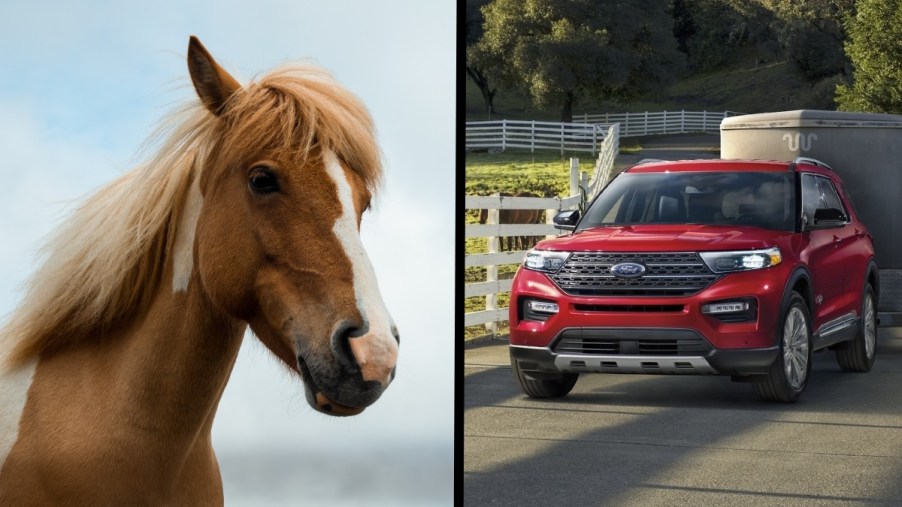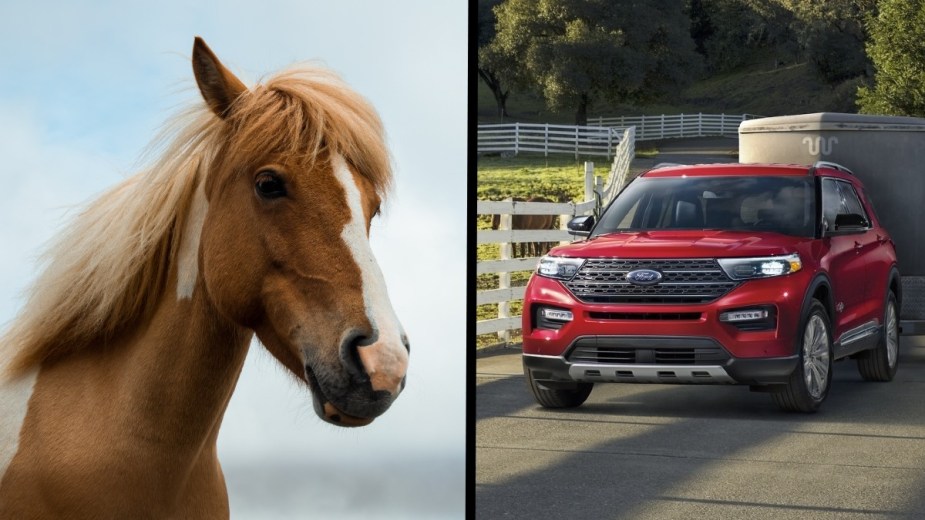
High Gas Prices: Is It Cheaper to Ride a Horse Than Drive a Car?
The average price of gasoline is at a record high, which puts a strain on the budgets of many car drivers. Some people are looking to cut costs by driving less. Others are thinking about buying an efficient hybrid or electric vehicle. However, with the high gas prices, some are even considering a more unusual form of transportation: a horse. With this in mind, it’s worth asking: Is it cheaper to ride a horse than drive a car?
What is more expensive to own: a horse or a car?

In the early days of the United States, a horse was a common form of transportation. Cars have long since surpassed horses as the mode of transportation of choice, though. Now, unless you’re a cowboy or ride a horse for leisure or in a competition, you’ll be unlikely to find yourself on a galloping horse.
However, the significant jump in gas prices has resulted in some people considering ditching their car in favor of a horse, as detailed by Heels Down. The site did a cost breakdown to determine what’s more expensive to own: a horse or a car.
Cost breakdown of driving a car vs. riding a horse
For the cost ownership breakdown, Heels Down compared the average yearly cost of driving a car vs. the annual average cost of riding a horse. The site, based on data from KRQE News, stated that, on average, the average yearly expenses for driving a car include $5,000 for gas and $1,000 for insurance. For maintenance, the average annual cost is $1,000.
For the annual cost of riding a horse, Heels Down was more thorough than KRQE News. It listed four primary expenses: boarding, health costs, sales price, and tack/equipment. For boarding a horse, the average cost is $500-$2,000. The variance is due to the level of “fanciness” that you want for the boarding, as well as “how much drought and gas are affecting hay prices on any given month.”
The health expenses for horses also vary — and quickly add up if a horse has significant health issues. Estimated health expenses include a $250 visit to the veterinarian twice a year for vaccinations, as well as “$220 for four shoes every five weeks or at least $50 for a trim.” Also, there’s often a $500 “surprise” veterinarian visit each year for medical procedures such as “colic stitches, X-Rays, or an ultrasound.”
In its analysis, KRQE News stated that it will cost you, on average, $3,000 to buy a horse. However, Heels Down indicated that this price is too low and outdated. The site stated the “average $3,000 off-track, no training Thoroughbred from 5 years ago is now $12,000.”
Tack and equipment for a horse include such things as a “quality saddle, bridle, bit, girth, and boots.” If buying the tack and equipment from the cheapest brands, it will cost you $500 to $2,000 per year. If purchasing from more expensive brands, it will cost you considerably more.
It’s cheaper to drive a car than ride a horse
When you add everything up, it’s cheaper to drive a car than ride a horse, even with the high gas prices. Based on the data from KRQE News, the average annual cost of driving a car is $7,000, while the yearly cost of riding a horse is $10,000.
Heels Down was more thorough in its cost breakdown for horse ownership, and as an equestrian site, its data is likely more accurate than KRQE News. The cumulative yearly cost for riding a horse, based on Heels Down’s data, is $16,000-$19,000.
If you’re looking to save money by riding a horse instead of driving a car due to high gas prices, you’ll likely be disappointed. You’d be better off looking for other cost-saving alternatives, such as riding a bicycle, public transportation, or driving a more efficient car.


